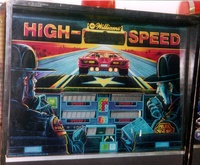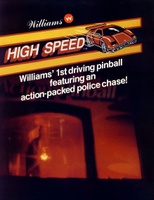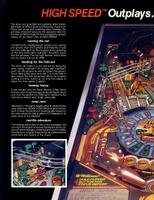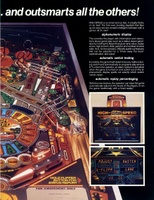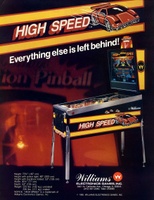
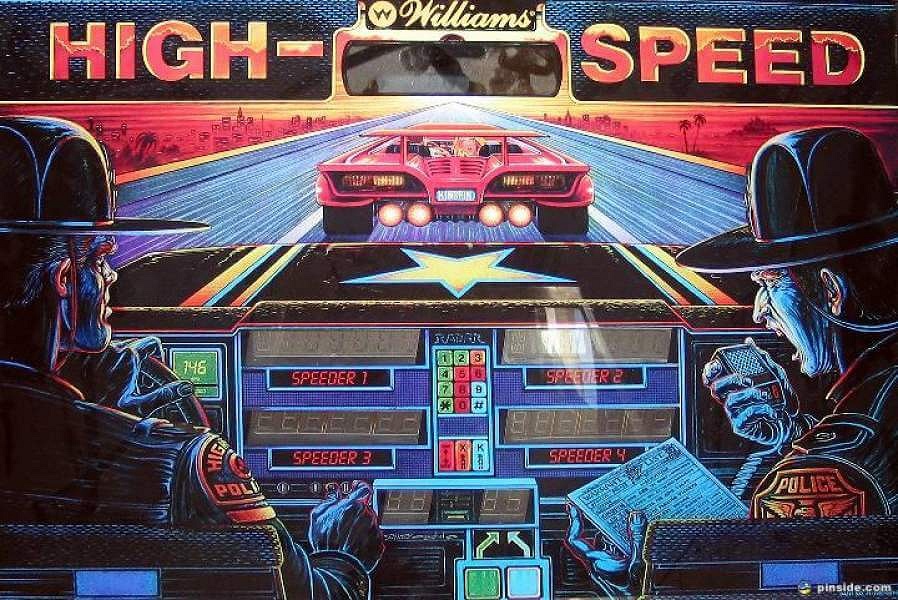
High Speed
"High Speed" was the first solid-state pin game to use automatic replay percentaging. An earlier electro-mechanical pin game with this feature was Williams' 1949 'St. Louis'. This game was the first to have a multiball jackpot that would carry-over from game to game. Williams' 1981 'Hyperball' used alpha-numeric displays before High Speed but is a flipperless arcade game, not a pin game. Regarding the theme of this game, Steve Ritchie has said: "It was based on a true story. I was actually chased by the cops at 146 mph in my 1979 Porsche 928." Ritchie credits Larry DeMar with parts of the design, but DeMar isn't credited for design on the playfield, just software. Python Anghelo did the backglass art and Mark Sprenger did all other art. The artwork near the upper right flipper shows insignia on the roofs of the squad cars as A8, W11, and S81. Mark Sprenger told us that this represented the initials and birthdate of his son, as a little gift to him. He also told us that the designer did not want the color green used anywhere on the playfield, calling it bad luck. Mark used green anyway and included for good luck a small four-leaf clover near the top traffic light. With the success of this game, he believes the clover was responsible for "finally breaking the dreaded green curse." Artist Tim Elliott told us that he is the voice of Dispatch (for example, "Roger, 504. Apprehend him!") 'High Speed' is the first of three Williams games that went into production using System 11. All three games have incorrect schematics showing the same error by depicting placement of the flipper end-of-stroke switch on the wrong side of the coil. As far as we know, all games left the factory correctly wired for EOS. Only the schematics were incorrect. No Manual Amendments or Service Bulletins have been found that acknowledge or correct this error. For a correct drawing of EOSS placement, consult the schematic for Williams' 1986 'PIN�BOT' or subsequent Williams games.

